Air Assault Rifle: Germany’s Fabled FG42
April 20th, 2021
6 minute read
Germany’s assault rifles made a significant impression on the battlefields of World War II. The Sturmgewehr and its new intermediate 7.92mm “Kurz” cartridge greatly influenced the Soviets to adopt their M43 round, and to later develop the AK-47.
While U.S. Ordnance generally dismissed the MP44/StG44 rifles as poor designs, they were greatly impressed with the Fallschirmjagergewehr 42, the “paratrooper rifle” chambered in the standard German 7.92x57mm. The FG42 is less celebrated than the Sturmgewehr rifles, but it would influence several postwar designs, including the U.S. M60 machine gun.
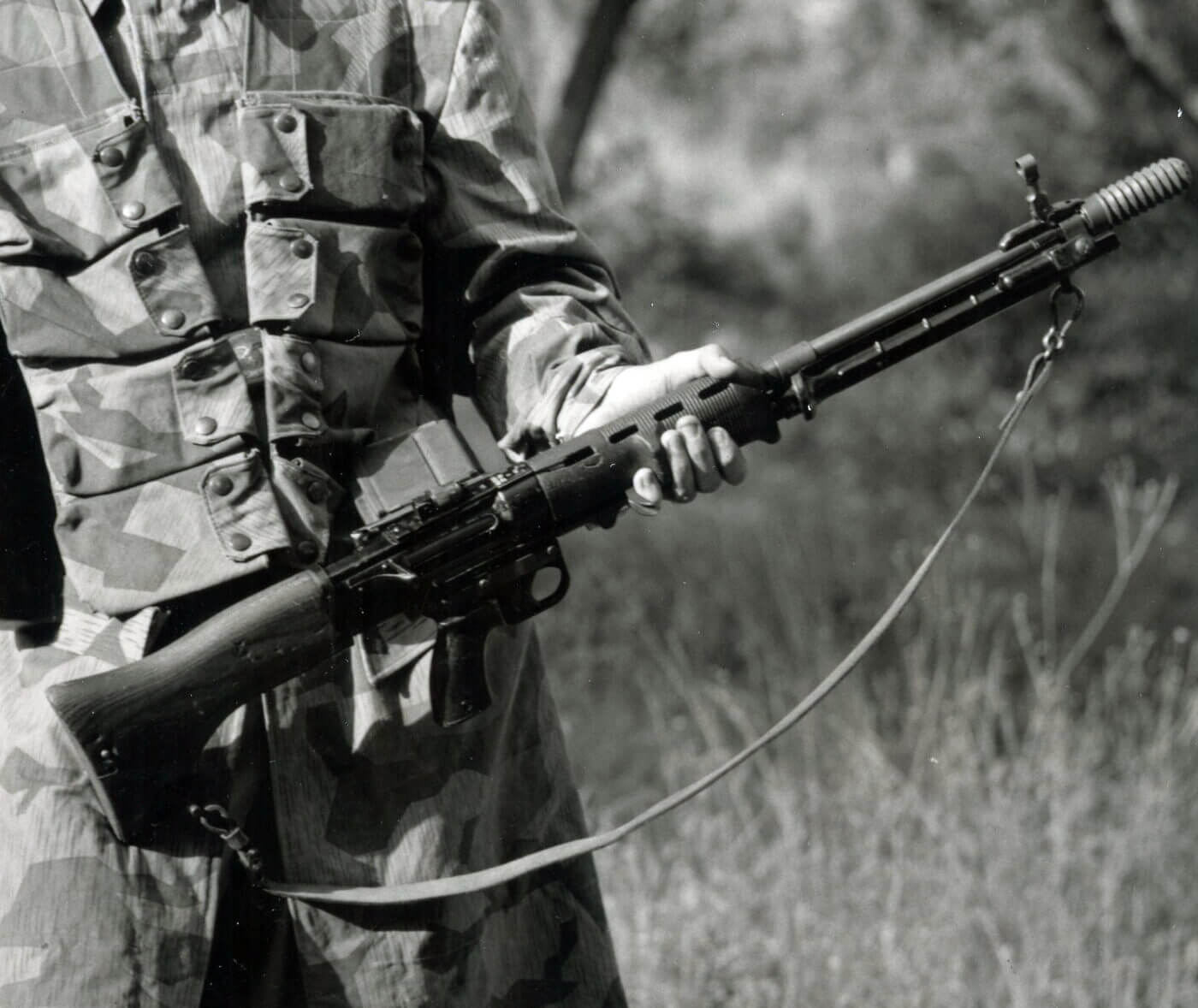
Hard Lessons Learned
Development of the specialized FG42 can be traced to the zenith of German paratrooper operations during World War II. In early April 1941, Germany invaded Greece. By April 23rd, the Germans had completed their conquest of the nation and were poised to attack the island of Crete to secure their new gains in the Mediterranean. Crete was to become the largest German airborne operation of the war, and while the Fallschirmjager secured the island in 13 days, they paid an enormous price to do so.
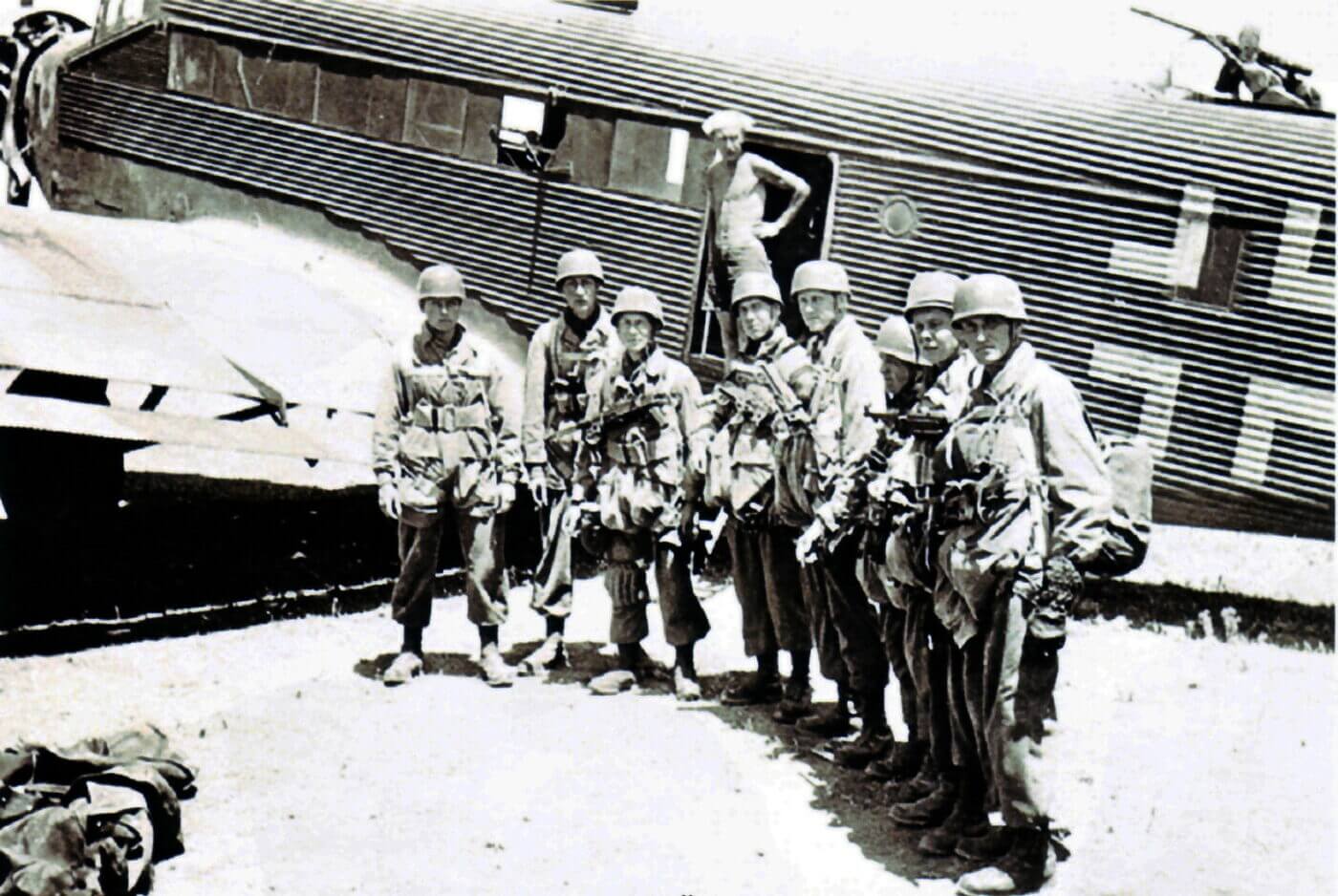
German losses on Crete were exceptionally high, with about 6,700 total casualties. About 4,500 of those casualties were among the paratroopers and glider-borne troops. For example, some of the first German units that dropped on May 20, 1941 were nearly wiped out — the 1st Assault Regiment suffered 112 paratroopers killed out of 126 men dropped, while the 3rd Battalion lost 400 out of 600 men in the first day of fighting. The slaughter among the paratroopers and glider troops was startling, particularly because the island’s defenders were a mishmash of disparate Commonwealth infantry interspersed with Greek militia.
Most of the German paratroopers’ problems were based in their jump doctrine and the initial lack of firepower that it caused. German procedure called for low-altitude jumps, and this meant that individual weapons were not carried by the paratroopers. Separate weapons cannisters carried Mauser rifles, MG 34 machine guns, MP40 submachine guns and the related ammunition.
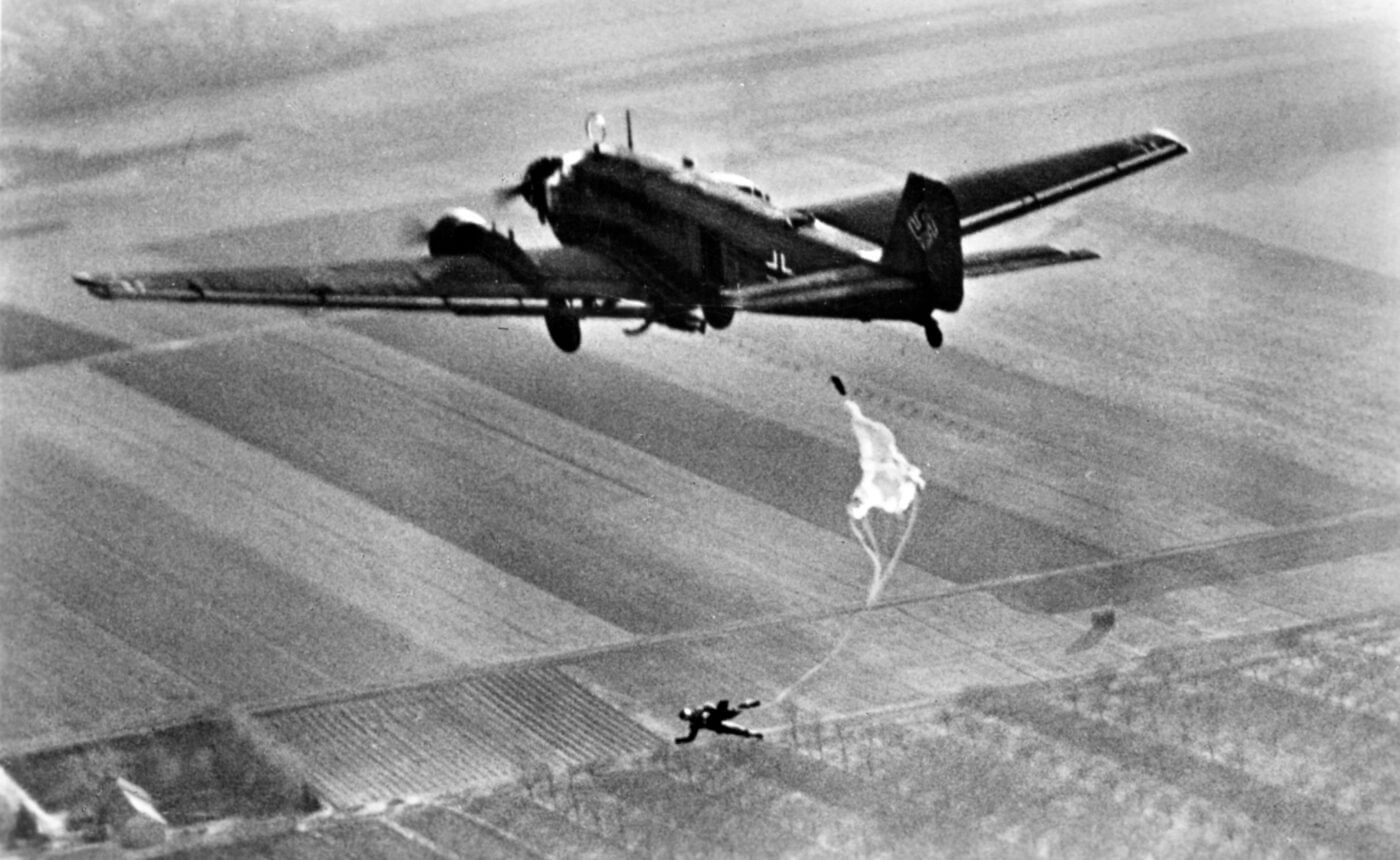
Immediately after landing, the German paratroopers were a tremendous disadvantage, limited to pistols and grenades until they could reach their weapons cannisters. During the Crete operation, the Germans had attempted to beef up their initial landing firepower by allowing 25 percent of the jump force to carry MP40 submachine guns.
This additional firepower did not make much of a difference. Since the paratroopers struggled to secure the landing zones, the following troops in gliders also suffered heavy casualties. The element of surprise was lost, and the casualties piled up. Many of the men in the early drops were shot before they could reach their weapons cannisters.
A Rifle Wish List
Crete proved a hard lesson, but the Fallschirmjager looked forward and pushed for a modern small arms design that could meet a wide range of battlefield needs. A program begun in 1940, was rapidly accelerated by the summer of 1941.
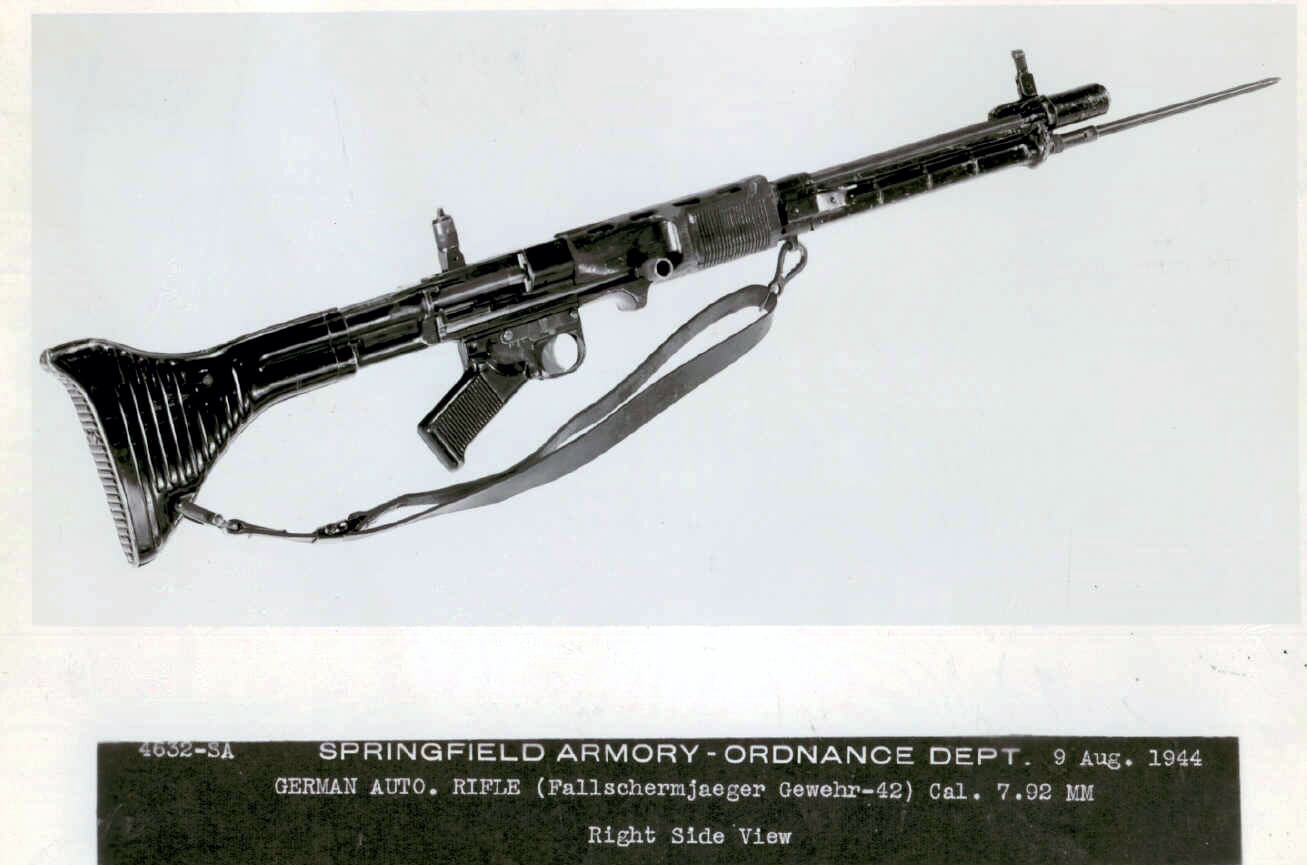
The wish list was a compilation of everything a 20th century soldier would come to desire in a battle rifle:
- Semi- and full-auto capability
- Uses the standard rifle and MG cartridge (7.92mm x 57)
- No more than one meter in length
- Weight equivalent to the Mauser 98k rifle
- Grenade-launching ability
- Can be equipped with a telescopic sight
- Can be equipped with a bayonet
German paratroops were under Luftwaffe control, and thus the requirement for a new rifle was specific to the German air force. Even so, everyone in Nazi Germany had to go through Adolf Hitler for approval. With the extreme losses suffered among the Fallschirmjager during the Crete operation, Hitler abandoned plans for major airborne operations and concluded there was no need for the new rifle. Behind the scenes, Luftwaffe Reichsmarschall Hermann Göring kept the “Fallschirmjagergewehr” project alive. By mid-December 1941, specifications had been issued to the German armaments industry.
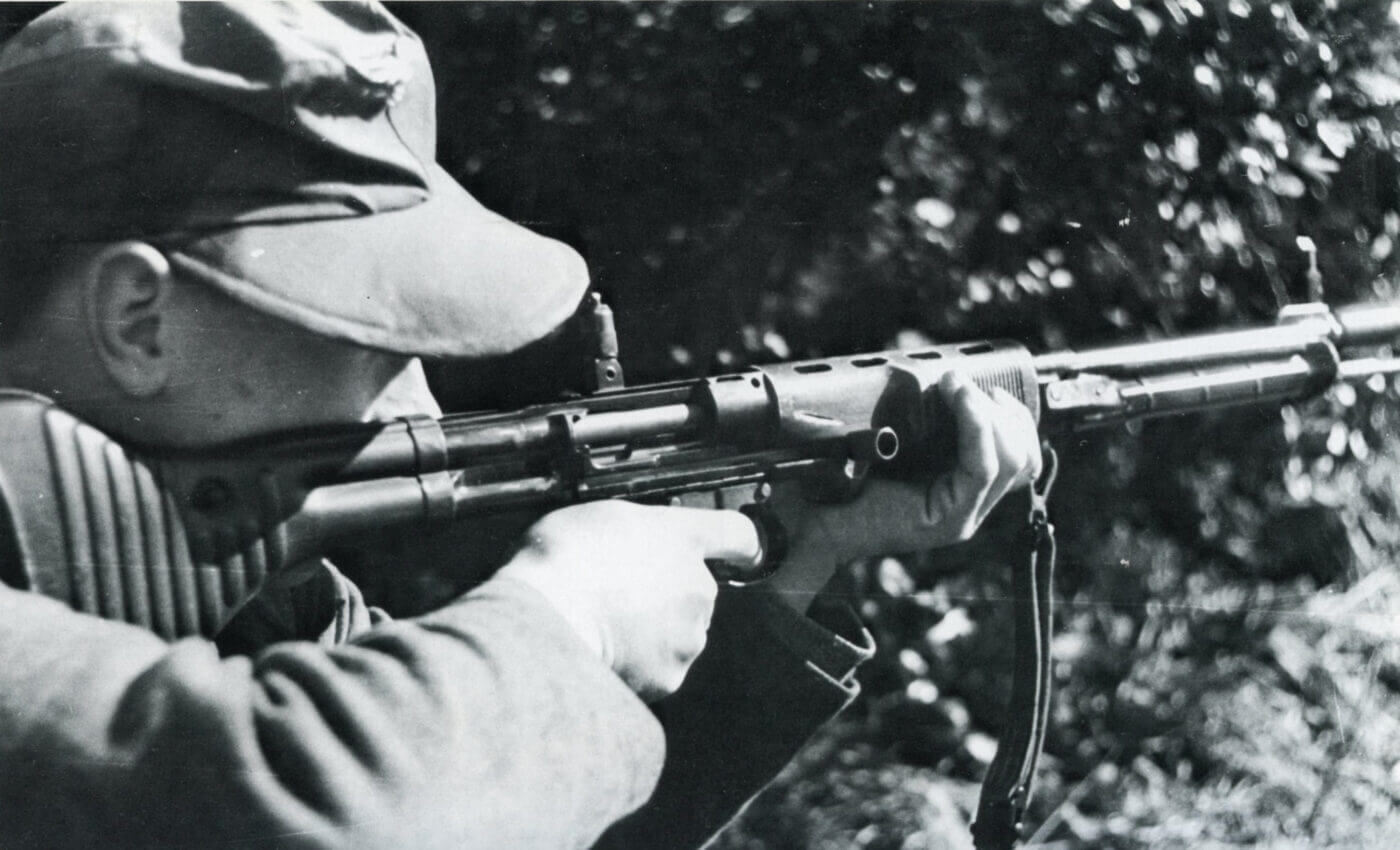
The FG42 underwent continuous development as ever-changing Luftwaffe requirements resulted in a wide range of variants. Even so, the Germans did not give the variants unique designations and official documents only denote the weapon as the ‘Fallschirmjägergewehr 42’ or the FG42. U.S. troops would come to know the FG42 during the autumn of 1943 and recognized it as a capable and effective weapon.
Beyond World War II
There have been some unsubstantiated reports that the FG42 was supplied to Viet Cong and NVA forces during the early years of the Vietnam War. This seems unlikely, as there were few FG42s used on the Eastern Front during World War II, certainly not enough for Soviet forces to capture in any useful quantity to provide to their Communist partners in Vietnam. Even so, the Special Forces Foreign Weapons Handbook from 1967 offers a full section on operating the weapon.
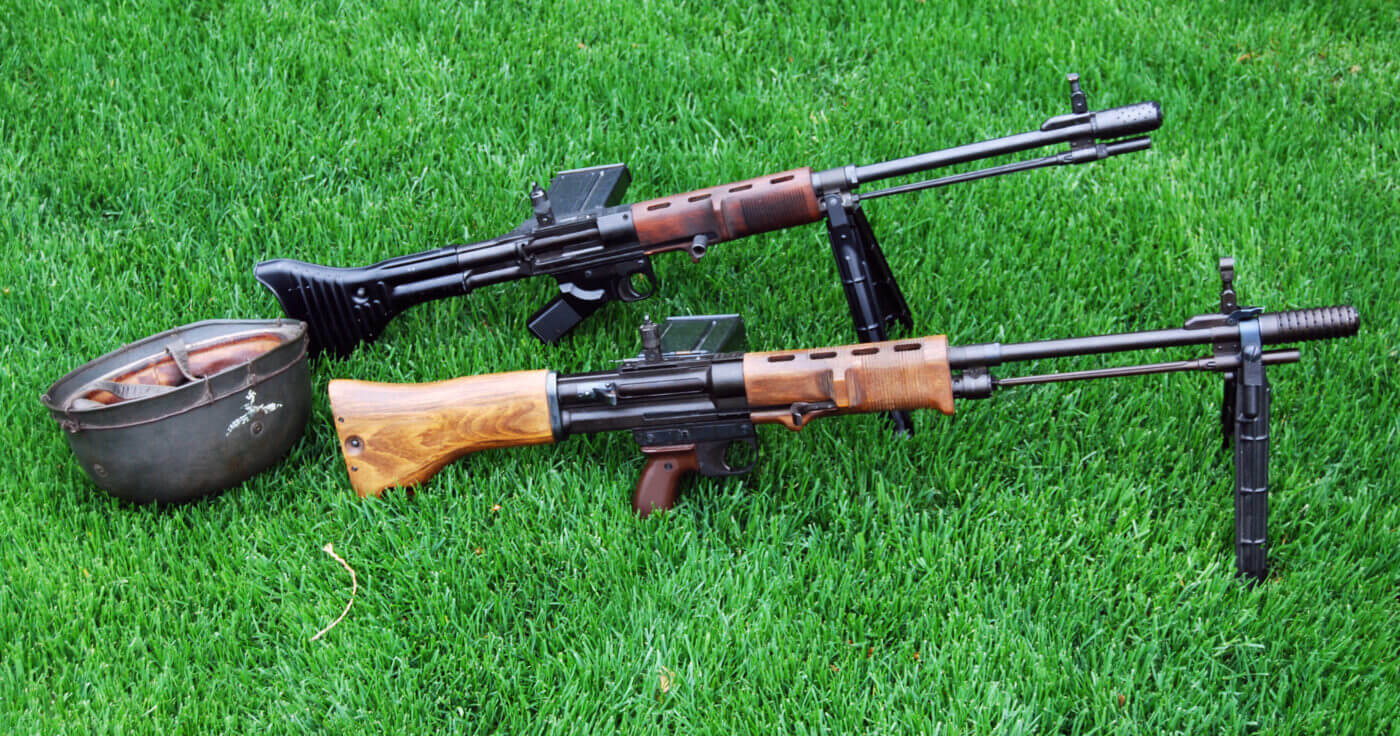
Shooting the FG42
The FG42 packed a lot of power and features into a single rifle. The biggest issue with any selective-fire rifle using a full-sized cartridge comes during automatic fire. The rifle can be used as a “light machine gun” (LMG, but only for short periods of time. For the FG42, its use as an LMG was limited by a 20-round magazine that was rapidly depleted with a 750 rpm cyclic rate.
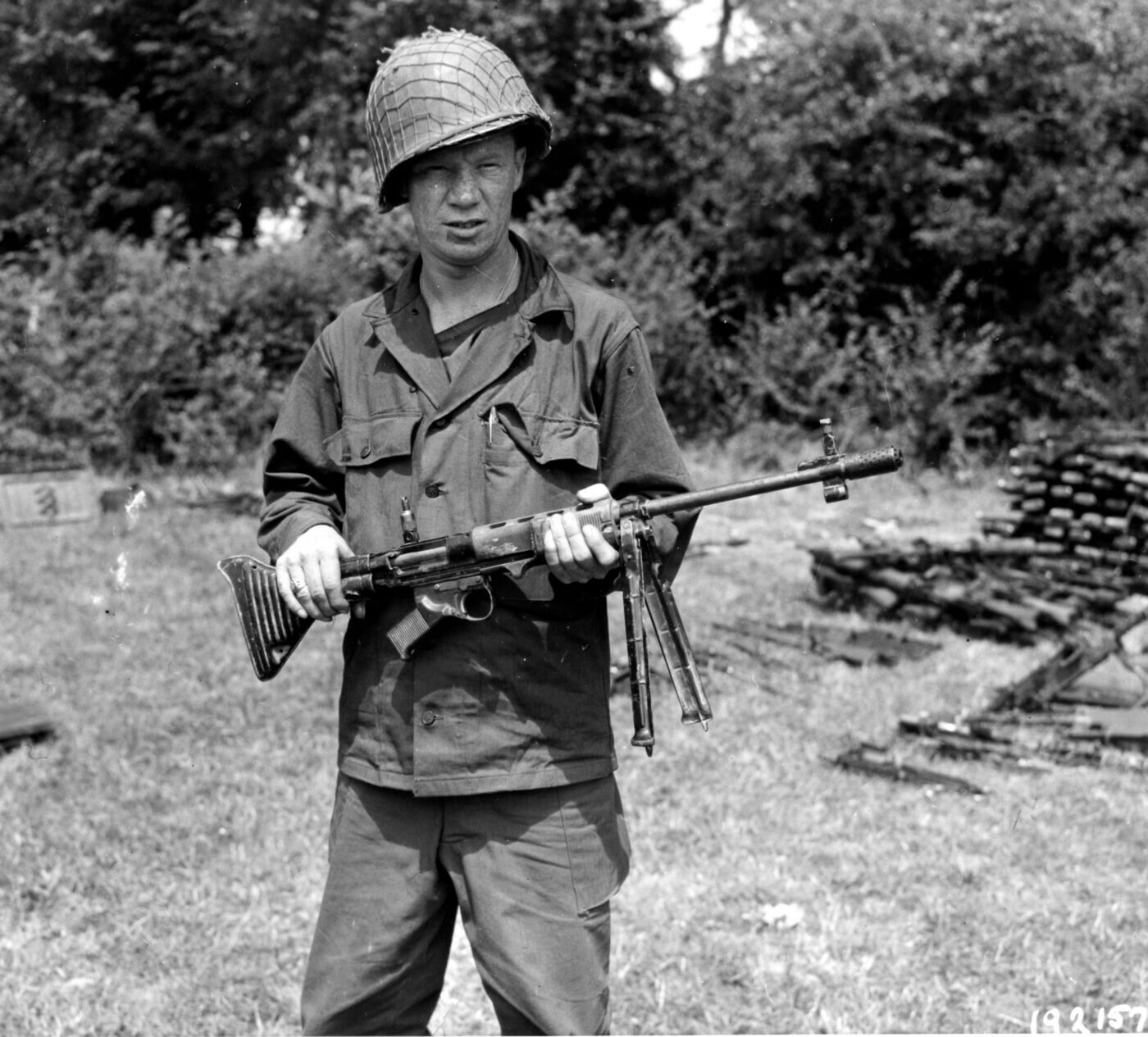
Some reports claim that the side-mounted magazine creates an unbalanced weapon. On the other hand, the side-mounted magazine allows a low profile during prone shooting. When used in the semi-auto mode, the FG42 was considered accurate and provided all the range of the German Mauser 98k rifle.
I did a little informal research with some FG42 shooters. Everyone I spoke to thought well of the rifle. Some found it a bit uncomfortable to shoot. Others praised its controllability when fired from the shoulder or the bipod. Most agreed that the muzzle flash was intense in low-light situations.
Whatever their opinions, there are very few FG42s in private hands in the United States (there are no more than 50 registered rifles, with prices reaching up to almost $500K), so it is unlikely that you or I will get the chance to shoot one.
The FG42 in Combat
The FG42’s first combat mission ended without a shot fired. After the Italian armistice in September 1943, Hitler moved quickly to secure what he could of the Italian mainland and the remaining Italian troops in the north. The Italian government had imprisoned Benito Mussolini in a mountain-top resort on the Gran Sasso.
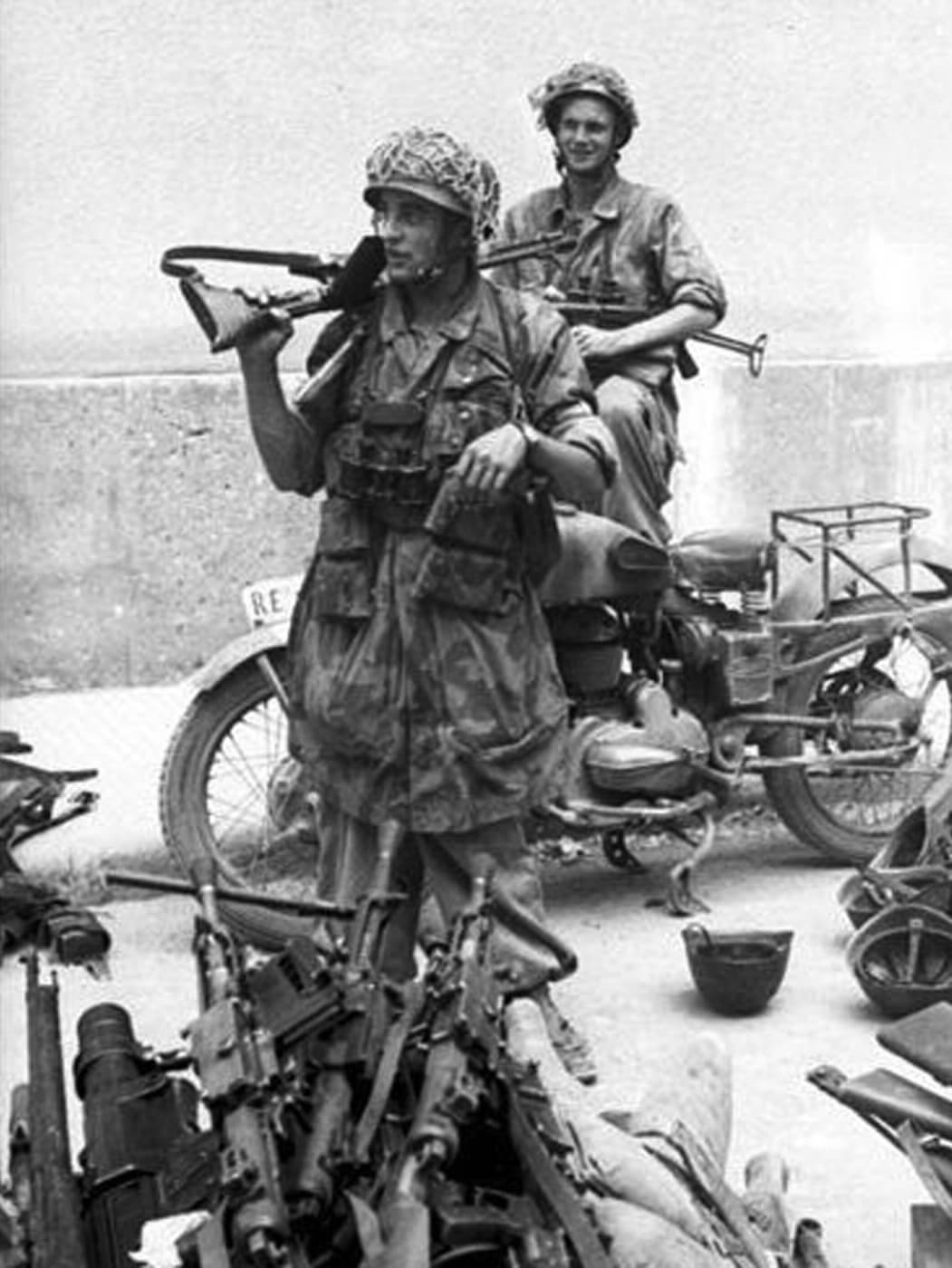
A group of German paratroopers and SS commandos overwhelmed the Carabinieri guards and freed Mussolini, taking him on to Berlin. Several of the paratroopers on this mission were photographed carrying the FG42.
Allied troops would soon encounter the FG42 in combat along the Gustav Line in Italy, and later in the hard fighting around Monte Cassino. German troops reported some shortcomings in the early versions of the weapon, and this resulted in the relocation of the bipod from the handguard to the muzzle, and the pistol grip angle was revised to be almost vertical.
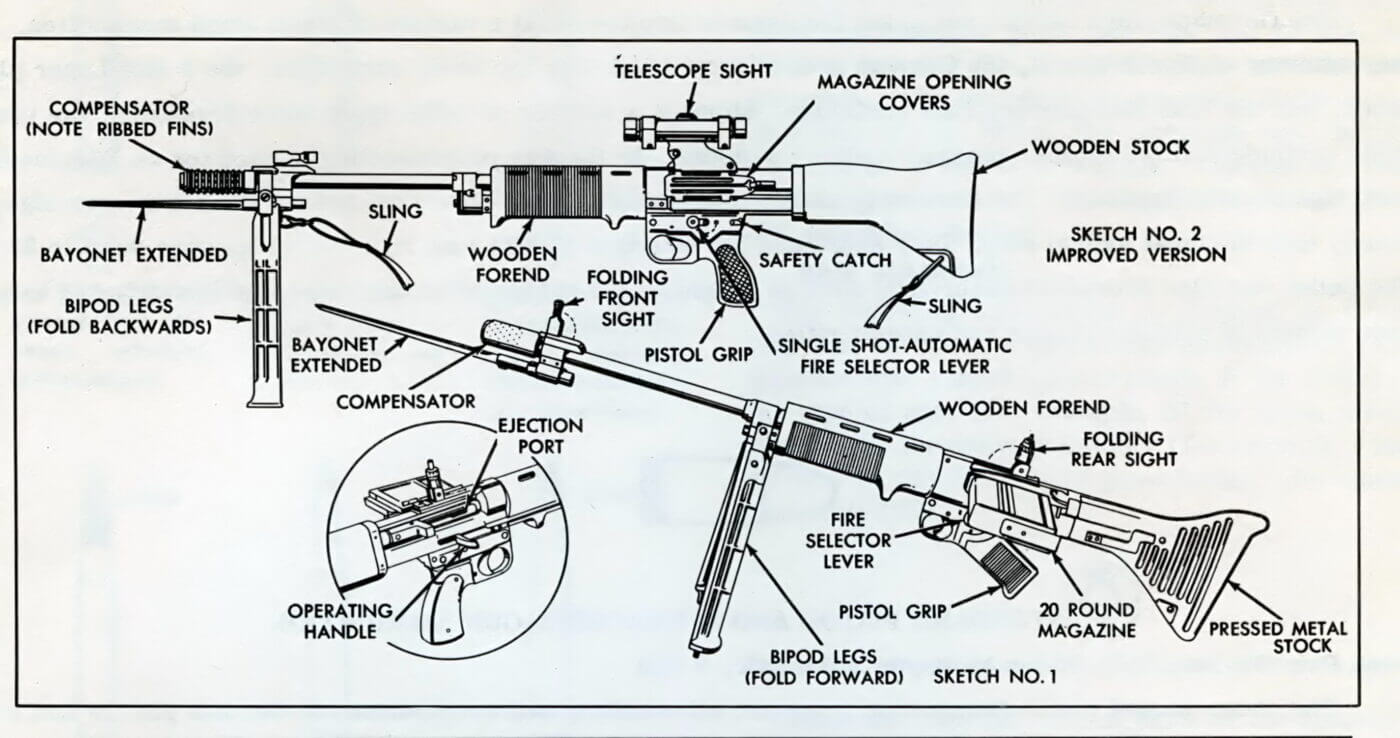
When Allied troops landed in Normandy during June 1944, those that faced German paratroops found the greatest concentration of FG42s during the war, and the advanced rifle design made a lasting impression on American troops, from the battlefields of France and Italy to the testing ranges in the United States.
Editor’s Note: Be sure to check out The Armory Life Forum, where you can comment about our daily articles, as well as just talk guns and gear. Click the “Go To Forum Thread” link below to jump in!
Join the Discussion
Continue Reading
Did you enjoy this article?

 302
302






